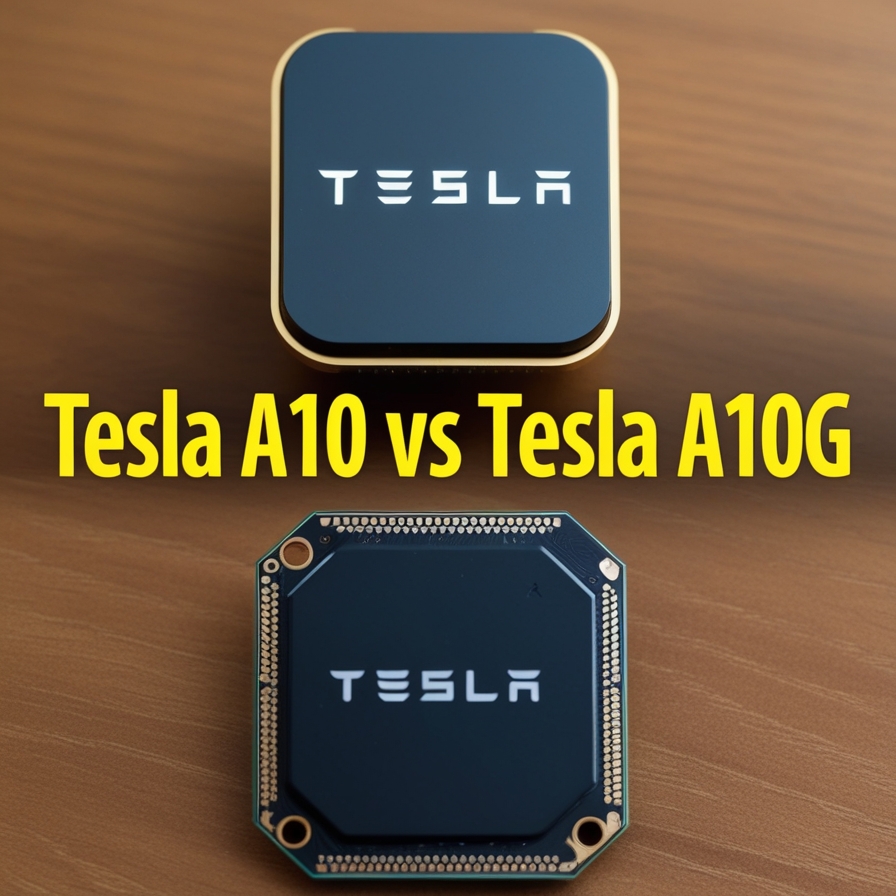In the world of data centers, the right GPU can make a world of difference, especially as AI workloads continue to expand and evolve. NVIDIA’s Tesla A10 and A10G GPUs have emerged as top contenders for high-performance computing tasks. If you’re grappling with which of these GPUs is the best fit for your data center, you’re in the right place. This article explores the nuances between the Tesla A10 and A10G, from their core features to their performance in AI applications, to help you make an informed decision.
Meet the Tesla A10: A Powerhouse for AI

The Tesla A10, powered by NVIDIA’s Ampere architecture, stands as a robust solution tailored for AI and machine learning workloads. It combines impressive hardware with cutting-edge technology to meet the demands of modern data centers.
Key Specifications
- Memory: Equipped with 24GB of GDDR6, allowing for the handling of extensive AI models and datasets.
- CUDA Cores: 6912 cores that facilitate parallel processing, essential for rapid AI computations.
- Tensor Cores: Advanced tensor cores designed to accelerate matrix operations, crucial for deep learning tasks.
- NVLink Support: Supports high-speed communication between multiple GPUs, enhancing scalability.
Advantages
- Exceptional Performance: Ideal for high-intensity AI tasks such as deep learning and large-scale inference.
- Efficiency: Designed with power efficiency in mind, reducing overall TCO.
- Scalability: Excellent for large-scale AI deployments requiring multiple GPUs.
Exploring the Tesla A10G: Versatility Meets Performance

While the Tesla A10 focuses on AI-centric tasks, the A10G brings versatility to the table, accommodating both AI workloads and other high-performance computing tasks.
Key Specifications
- Memory: Also features 24GB of GDDR6, offering substantial capacity for complex computations.
- CUDA Cores: 6144 cores, slightly fewer than the A10, but still effective for high-performance tasks.
- Ray Tracing Cores: Includes dedicated ray tracing cores, extending its capabilities to real-time graphics rendering.
- Tensor Cores: Optimized for AI tasks, although less specialized compared to the A10.
Advantages
- Versatility: Handles a wide range of applications beyond just AI, including graphics-intensive tasks.
- Cost-Effective: Provides a good balance between performance and price, particularly in mixed-use environments.
- Enhanced Graphics: Ray tracing capabilities make it suitable for real-time graphics applications.
Comparative Analysis: Tesla A10 vs. A10G
To better understand which GPU suits your needs, let’s delve into a comparative analysis based on performance, architecture, and efficiency.
Performance Metrics
| Feature | Tesla A10 | Tesla A10G |
|---|---|---|
| Launch Date | September 2021 | September 2022 |
| Architecture | NVIDIA Ampere | NVIDIA Ampere |
| CUDA Cores | 6912 | 6144 |
| Tensor Cores | 256 | 240 |
| Memory | 24 GB GDDR6 | 24 GB GDDR6 |
| Memory Bandwidth | 600 GB/s | 600 GB/s |
| Peak FP32 Performance | 31.2 TFLOPs | 24.7 TFLOPs |
| Peak FP64 Performance | 9.7 TFLOPs | 8.1 TFLOPs |
| NVLink Bandwidth | 300 GB/s | 300 GB/s |
| Single Precision Performance | 1.5 TFLOPS | 1.35 TFLOPS |
| Double Precision Performance | 750 GFLOPS | 675 GFLOPS |
| Power Consumption | 300 watts | 250 watts |
Performance Insights
- Tesla A10: Demonstrates superior single-precision and double-precision performance, making it highly effective for deep learning model training.
- A10G: While it slightly lags behind in raw AI performance, its versatility in handling both AI and graphics tasks makes it a strong competitor.
Architectural Differences: A Detailed Look
Both GPUs utilize the Ampere architecture but have distinct features tailored to their specific use cases.
- Tesla A10: Prioritizes CUDA core count and tensor core performance, optimizing it for AI-focused tasks.
- A10G: Adds ray tracing cores to the mix, providing flexibility for environments where AI and real-time graphics rendering are both important.
AI Workloads Performance
Evaluating performance in real-world AI tasks, the Tesla A10 generally outperforms the A10G due to its higher core count and optimized architecture for AI tasks. However, the A10G’s broader application range offers compelling advantages in environments requiring both AI and graphics processing.
Energy Efficiency and Cost
The Tesla A10 is designed for superior energy efficiency, which can be a crucial factor for data centers focused on reducing operational costs. In contrast, the A10G, with its slightly higher power consumption, may offer more value in mixed-use scenarios due to its versatility.
Security and Integration
Both GPUs offer robust security features and integrate seamlessly with modern data center infrastructure. They support essential data protection measures, including secure boot and encryption, ensuring safe and efficient operations.
Conclusion
Choosing between the Tesla A10 and A10G depends on your data center’s specific needs. The Tesla A10 excels in AI-focused applications with its high performance and energy efficiency, making it ideal for AI-centric environments. On the other hand, the A10G’s versatility and additional features make it a great option for data centers requiring a blend of AI and other computational tasks. Assessing your workload requirements will guide you to the best choice for your infrastructure.

Leave a Reply
You must be logged in to post a comment.